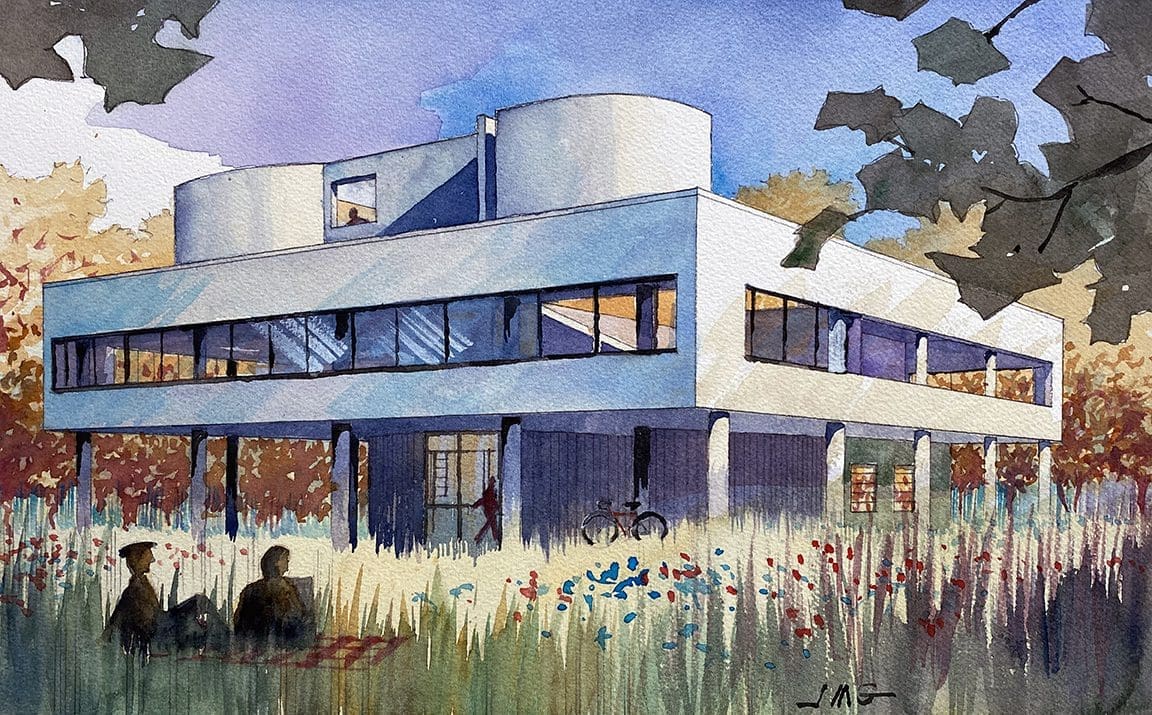I just finished this watercolor painting of one of the icons of 20th Century architecture. According to Wikipedia, Villa Savoye is a modernist villa and gatelodge in Poissy, on the outskirts of Paris, France. It was designed by the Swiss architects Le Corbusier and his cousin Pierre Jeanneret, and built between 1928 and 1931 using reinforced concrete.

According to me, this structure was revolutionary at that time for its bold statement of what a house could look like–a “machine for living” as described by the architect. Inspired by the art movement of Cubism, it features pure geometric forms playfully set against one another, and an interplay of interior and exterior spaces. Ramps, not stairs, bring you to the upper levels, the middle level has both indoor and outdoor spaces, and the final ramp takes you up to the roof, which has a generous outdoor terrace. Architecturally, it is defined as the International Style, very much in vogue and avant garde for that era. Sharp, clean lines, mostly black and white, occasionally using primary colors. Now that nearly one hundred years has passed since it was designed and built, my impression is that the design ideas and aesthetic represented here at the Villa Savoye have had more influence on non-residential architecture than anything else. Glass curtain walls with structural columns inside the glass, long ribbon windows, white stucco with black window frames–all of these are common in the design of office buildings, civic buildings, hospitals nowadays. Not so common to this day in residential designs. If you were to come across this house in a residential setting today, you would be shocked. That makes me happy for the architect. I think he would take pleasure in that–his work is still revolutionary and shocking one hundred years later. There are many reasons and repercussions for the course of popular architectural design over that time since, and I have my own thoughts–but you could fill a book on that subject. A recent internet search tells me that the Villa Savoye has been restored and can be toured and appreciated by the public for the significant work of architecture that it is–and that makes me happy–me and Corbu, I hope !
Recent Comments